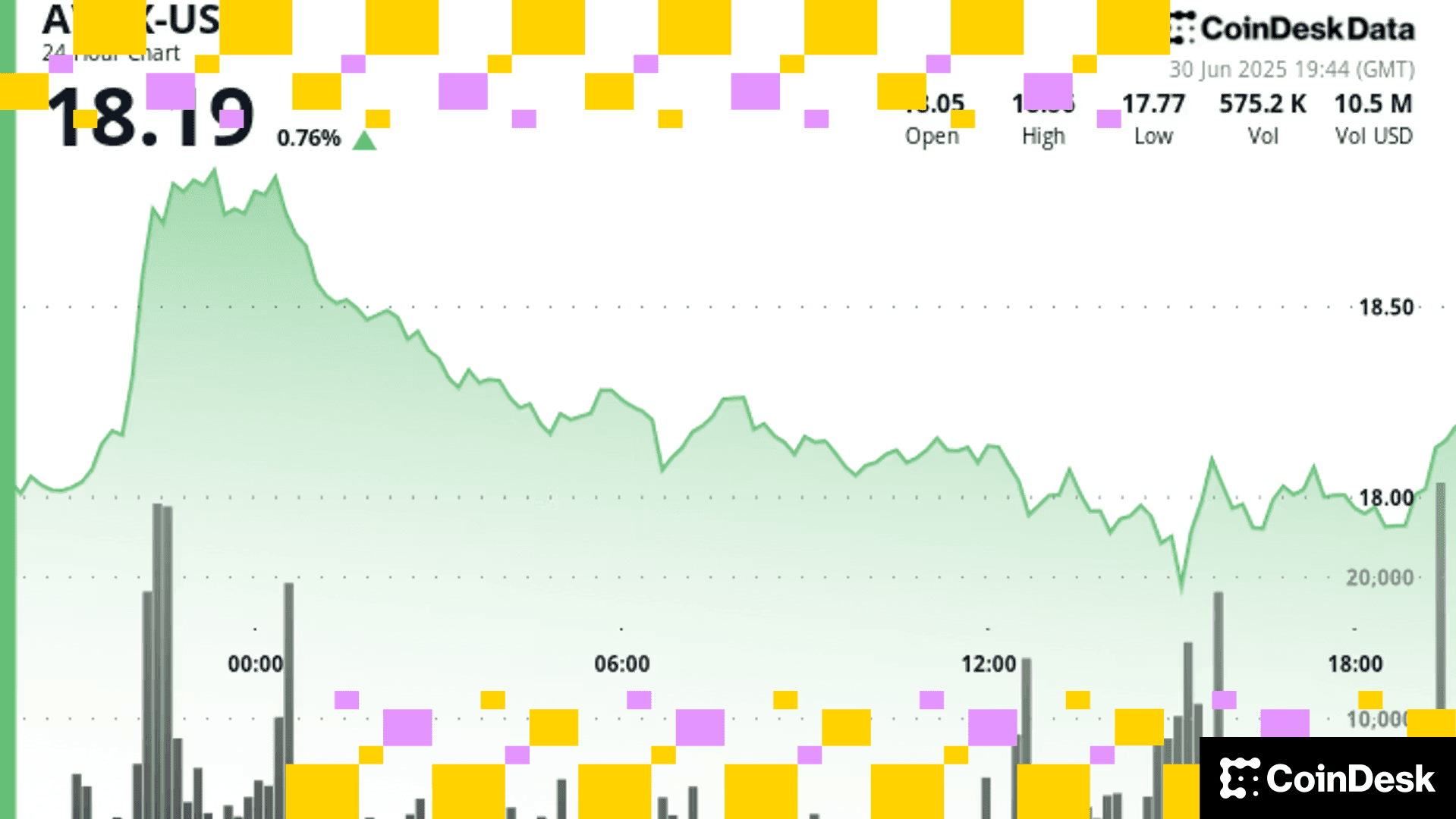Coinbase to Delist Unauthorized Stablecoins in EU by December
Tether, which is the largest issuer of stablecoins, doesn't have the necessary e-money license yet in the European Union.

- Crypto exchange Coinbase plans to de-list any unauthorized stablecoins in the European Union by December 30.
- Crypto companies are racing to comply with the European Union's Markets in Crypto Assets (MiCA) rules, which require firms to be authorized in at least one EU country.
- Tether said MiCA introduces some complexities for stablecoins operating in the region and will introduce "a technology-based solution" to counter those challenges.
Crypto exchange Coinbase (COIN) plans to de-list any unauthorized stablecoins in the European Union by December to comply with the EU's Markets in Crypto Assets rules (MiCA).
"Given our commitment to compliance, we intend to restrict the provision of services to EEA [European Economic Area] users in connection with stablecoins that do not meet the MiCA requirements by December 30, 2024," Coinbase said in a statement shared with CoinDesk on Friday.
Coinbase, the second biggest exchange, after Bybit, according to CoinGecko data, has been racing alongside other companies to become compliant with the European Union's MiCA rules which require firms to be authorized in at least one EU country. Rules for stablecoins came into force on June 30, which require stablecoin issuers to have an e-money license in an EU member state to be able to operate in the bloc of 27 nations.
Not all stablecoins have managed to get the necessary licenses in the EU. In July Circle became the first global stablecoin issuer to secure an Electronic Money Institution license in the region and is the second-largest issuer of stablecoins. Tether, which is the largest issuer of stablecoins, doesn't have an e-money license in the EU.
Tether said that it commends EU for their efforts with creating MiCA but noted that it introduces some complexities for stablecoins operating in the region. "Tether commends EU regulators for their efforts in establishing a structured framework, as it plays a key role in fostering growth within the sector. However, as we have consistently expressed, some aspects of MiCA make the operation of EU-licensed stablecoins more complex and potentially introduce new risks to both local banking infrastructure and stablecoins themselves," a spokesperson for the stablecoin issuer told CoinDesk in a statement.
"To address these challenges to support users in the region, Tether is developing a technology-based solution, which we will unveil in due course and will be tailor made to serve the necessities of the European market," the spokesperson added.
Coinbase plans to share further details of its plan in November, and will provide options for affected European Economic areas customers to switch to stablecoins issued by appropriately authorized issuers, such as Circles' USDC and EURC, it said in the statement.
Bloomberg was first to report the news about Coinbase's move.
Read more: EU's Restrictive Stablecoin Rules Take Effect Soon and Issuers Are Running Out of Time
UPDATE (Oct. 4, 22:04 UTC): Updates to add Tether's comment.
More For You
Exchange Review - March 2025

CoinDesk Data's monthly Exchange Review captures the key developments within the cryptocurrency exchange market. The report includes analyses that relate to exchange volumes, crypto derivatives trading, market segmentation by fees, fiat trading, and more.
What to know:
Trading activity softened in March as market uncertainty grew amid escalating tariff tensions between the U.S. and global trading partners. Centralized exchanges recorded their lowest combined trading volume since October, declining 6.24% to $6.79tn. This marked the third consecutive monthly decline across both market segments, with spot trading volume falling 14.1% to $1.98tn and derivatives trading slipping 2.56% to $4.81tn.
- Trading Volumes Decline for Third Consecutive Month: Combined spot and derivatives trading volume on centralized exchanges fell by 6.24% to $6.79tn in March 2025, reaching the lowest level since October. Both spot and derivatives markets recorded their third consecutive monthly decline, falling 14.1% and 2.56% to $1.98tn and $4.81tn respectively.
- Institutional Crypto Trading Volume on CME Falls 23.5%: In March, total derivatives trading volume on the CME exchange fell by 23.5% to $175bn, the lowest monthly volume since October 2024. CME's market share among derivatives exchanges dropped from 4.63% to 3.64%, suggesting declining institutional interest amid current macroeconomic conditions.
- Bybit Spot Market Share Slides in March: Spot trading volume on Bybit fell by 52.1% to $81.1bn in March, coinciding with decreased trading activity following the hack of the exchange's cold wallets in February. Bybit's spot market share dropped from 7.35% to 4.10%, its lowest since July 2023.
More For You












